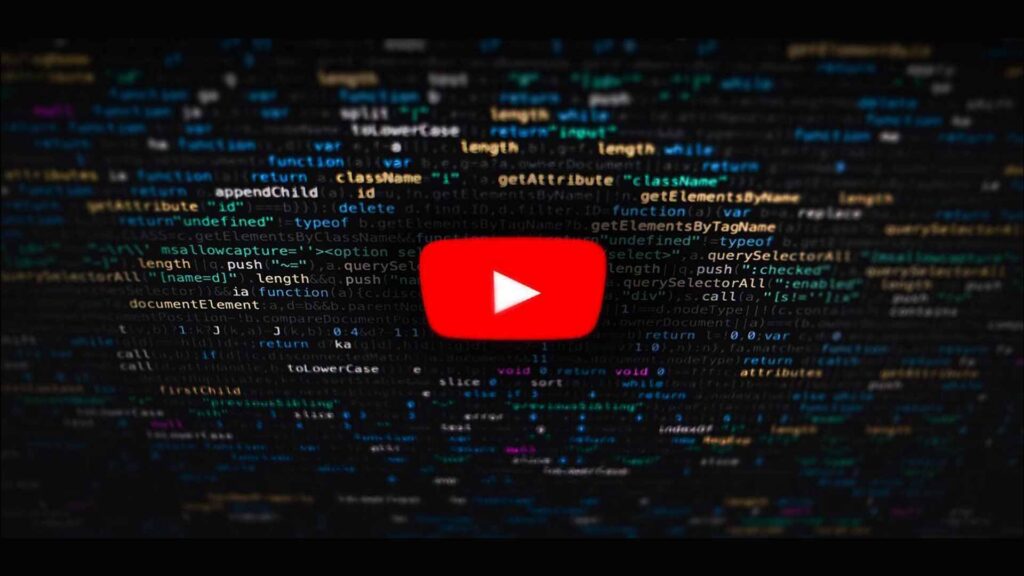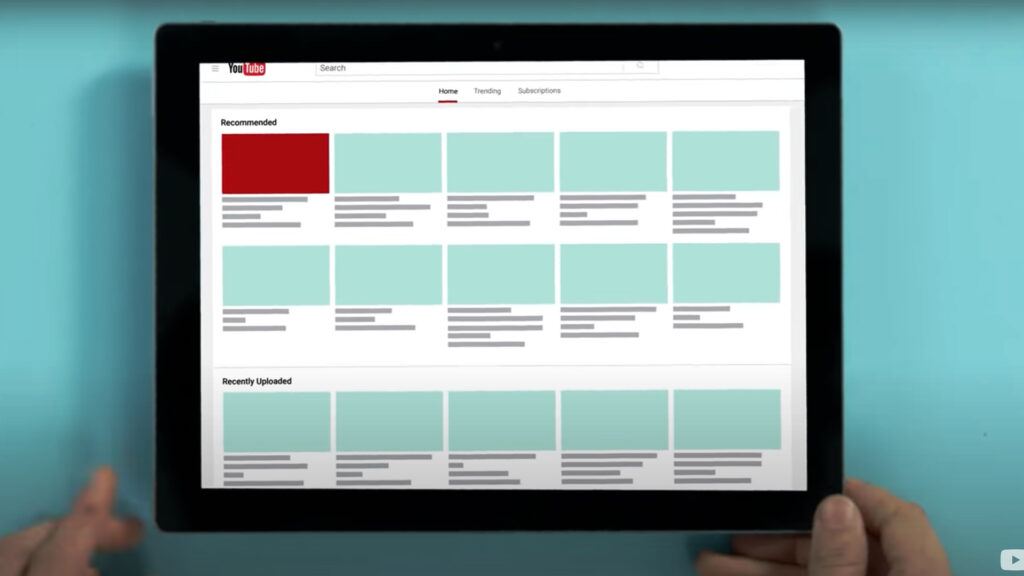YouTube has the second-largest number of active users, making it one of the most popular video-first social media platforms. Ever since its launch in 2015, the platform has been credited with keeping users engaged. YouTube is doing something right with its algorithm, and what it is doing is effective. The key is to understand how the YouTube algorithm works and what can be done to maximize its value.

What is the YouTube algorithm?
The goal of YouTube’s algorithm is to present users with the greatest and most interesting content using an AI-powered recommendation system.. YouTube’s recommendation algorithm is constantly changing to understand the preferences of every user. Engagements and preferences inform the algorithm what a user wants to see more of or less of.
Understanding the algorithm of YouTube
Normally, a social media algorithm is designed to provide engaging and relevant content to its users. But a YouTube recommendation algorithm would always be geared towards the policies, values, and mission of the company. YouTube suggests that the crux of their approach is the 4 R’s that aim to
- Reduce false news
- Remove content that violates company policies.
- Reward trusted creators.
- Raise authoritative sources for information and news.
This suggests that the YouTube algorithm is looking to prioritize content that follows guidelines. This is factually correct and comes from trusted creators and authoritative channels.
The workings of the YouTube algorithm in 2023
Like other algorithms, YouTube is relying on machine learning to understand the behavior of its users. In the creator video, YouTube suggests
- The recommendation system on YouTube actually finds videos for viewers, rather than viewers for videos. Videos are pulled for each user when they visit YouTube. The goal of the discovery system and search is to provide every viewer with a video that they are most likely to watch and enjoy. The recommendations of every viewer may look a bit different.
The algorithm takes several factors into account while recommending content. The factors can be split into two categories:
- Video performance
- Viewer personalization
Signals used in viewer personalization include things like which videos viewers watch and which ones they skip. The success of videos is determined on user happiness.

YouTube Search
It is no secret that people use YouTube as a search engine. People do not use the search bar on YouTube itself, but as a Google-owned channel, it is found on the SERPs and has a video tab for video searches on Google. If the video is featured in the search, it can earn views from an audience that may not know you. YouTube’s shorts algorithm has made three things very clear:
- Relevance is provided through video title tags, descriptions, and search queries (think keywords).
- Quality is important as YouTube has the ability to gauge channel expertise, trustworthiness, and credibility.
- Engagement signals such as video watch time enable us to determine whether a particular video is useful to address a specific search intent.
Trending
Trending is a vital component of the YouTube Shorts algorithm, as it is not personalized. The aim of trending is to share videos that appeal to a large audience. Featuring in a trending spot on YouTube will require fast churn in relation to trending pieces. For an average creator, this may be a video capturing the attention of a viewer.
- Find something in your niche that attracts a lot of attention. It can be a concept, a current event, or a concept—you need to find something with energy and pay attention to it. This would enable your channel to grow and generate considerable views on YouTube.
YouTube shorts
With the rise of short-form videos like Instagram and TikTok, it is hardly a surprise that YouTube encourages its viewers to create shorts. The shorts are given priority on the mobile version of the homepage, which features one ad and one long-form video. There are a couple of users.
- Those who want to watch short-term videos
- Those who prefer long-term
Creators need to include both short-form and long-form videos on their channels to give them the best opportunity for reaching a wider audience. An engaged form of shorts includes a viral fashion trend.
Tips on working with YouTube’s algorithm for more effective search
To get the most from the YouTube platform, you need to create engaging videos for users with the YouTube Shorts algorithm in your favor. In this manner, the platform will prioritize the videos on your homepage or in the recommended video sections. Below are a few tactics to get more visibility for your videos.
Keyword search
YouTube has made it clear that tags, keywords, video titles, and descriptions help people determine a video’s relevancy. Ensure that you are doing proper keyword research to clearly discover what people are searching for on YouTube. Then, make videos about what your target audience is looking for.
The keywords need to be used strategically and manually in descriptions and video titles to increase their chances of appearing in relevant searches.

Using YouTube shorts
Experiment with long-form and short-form videos. There is no doubt about the fact that short-term videos have soared in popularity, but they are headed nowhere. YouTube has the functionality to help creators cut long-form content into smaller shorts.
Engaging thumbnails
In this world of infinite scrolling and on visual platforms like YouTube, engaging thumbnails are an absolute must. Rather than using a generated thumbnail for your video, design something that stands out.
To improve engagement on your channel, YouTube thumbnails must follow a template. Improve your click-through rate by assisting devoted viewers to find your movie in a crowded area.
Engage with comments
Comments are engagement metrics. Commenting on your video increases the chances of YouTube viewing it as authoritative and useful. Ensure that you reply to the comments when possible. Engaging with comments doubles the comment count and inspires an audience to learn more. If people knew they were likely to get a response, they would not mind commenting.
Marketing videos
Videos developed for YouTube can be marketed on other platforms too. With the embed feature of YouTube, adding a video to the site’s blog would be easy. The videos embedded in blogs are likely to appear in the SERPs and the video search tab.
Videos embedded on external websites work well for driving more traffic to the video, which in turn boasts views from YouTube browse features and YouTube searches. To increase viewership, you need to market your videos in a powerful manner.
Watch time
The video watch time is a huge indicator of video quality. If someone stays glued to the video till the end, then it is truly engaging. Create material that viewers will remain with because it is anticipated that this form of engagement will have a significant impact on the YouTube algorithm.
It may be tempting to simply please an algorithm and tick a bunch of boxes, but that should not be the case. Make sure that the video is exciting for the viewers. Experimentation allows you to understand your target audience better so that you can develop videos that they would love to watch and engage with.
For more such blogs, Connect with GTECH.
Related Post
Publications, Insights & News from GTECH








